27 Outdated Marriage Beliefs From The 1950s That Modern Society Has Left Behind
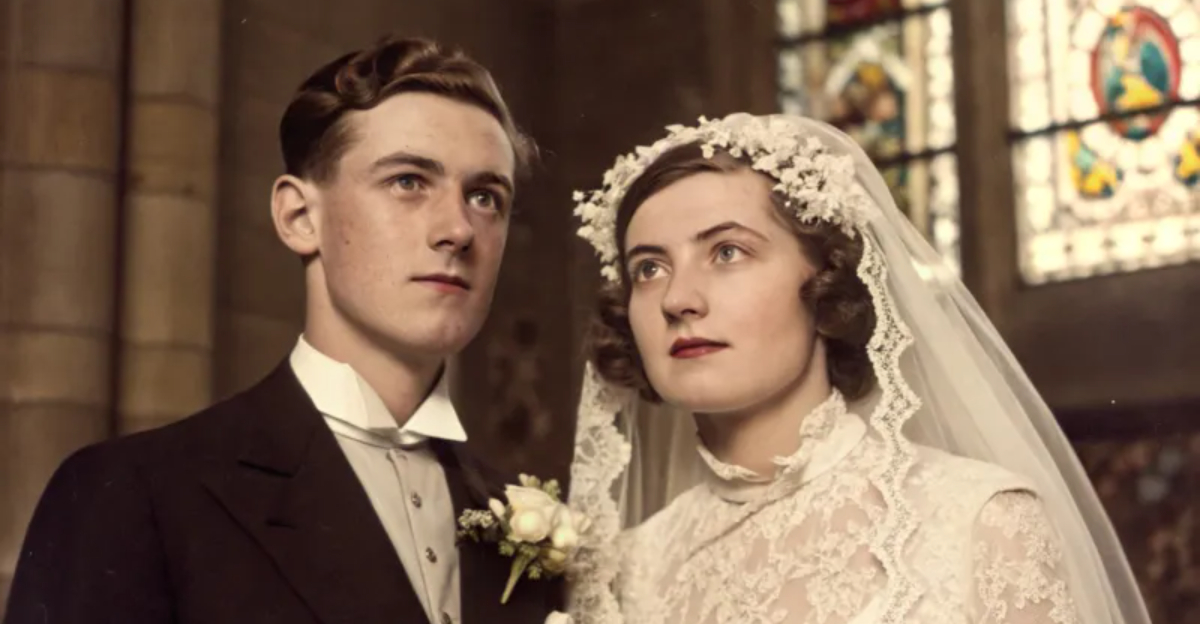
In the rapidly evolving landscape of relationships, the rigid marriage beliefs of the 1950s seem almost anachronistic.
As a marriage counselor, I have had the privilege of witnessing the transformative journey of couples who strive to break free from these outdated norms.
Today, marriages are built on foundations of equality, emotional connection, and mutual support—principles that were often overshadowed by societal expectations in the past.
Let’s explore how modern marriages have left behind 27 outdated beliefs, paving the way for partnerships that truly thrive.
1. Wives Shouldn’t Work
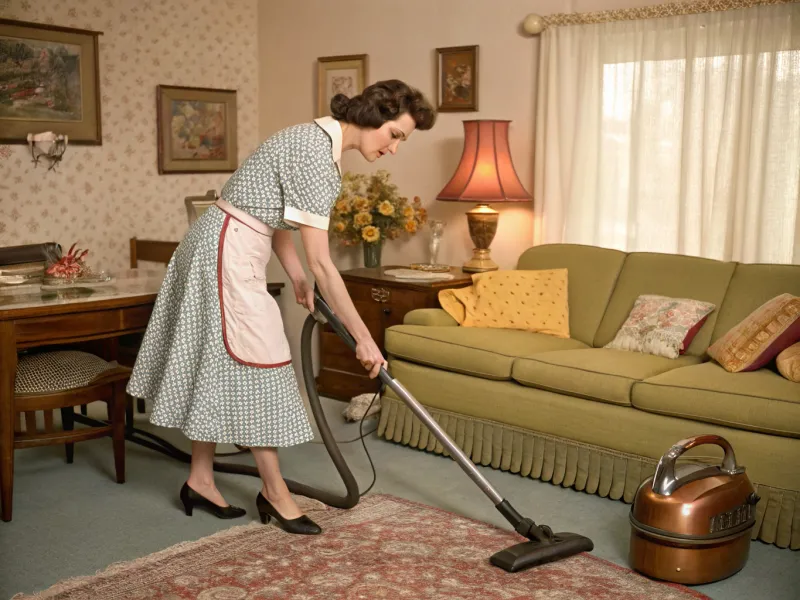
In the 1950s, it was commonly believed that a woman’s place was at home, tending to household chores and raising children. Women were often discouraged from pursuing careers, and a working wife was seen as a sign of a husband’s inability to provide. This belief reinforced gender roles and limited women’s economic independence.
Today, marriages thrive on equality and shared responsibilities. Many couples both work and contribute financially, creating a partnership where both partners can pursue their passions and careers. This shift has allowed for a more balanced division of labor at home and a greater sense of fulfillment for women who choose to work.
Encouraging both partners to pursue their careers has strengthened relationships by promoting mutual respect and understanding. It is essential to support each other’s ambitions and dreams, fostering an environment where both partners can grow and succeed. Modern marriages are about teamwork, not adherence to outdated gender roles.
2. Husband Makes All Decisions

The 1950s marriage often operated under the belief that the husband was the unquestioned decision-maker in all aspects of life. Whether it was financial decisions, family planning, or daily choices, the husband’s word was final, leaving little room for the wife’s input or opinions.
Modern relationships have shifted towards a more collaborative approach. Decisions are made together, with both partners’ voices equally heard and valued. This dynamic fosters a deeper connection and respect between spouses, allowing both to feel empowered and involved in shaping their shared future.
Today, communication and compromise are the cornerstones of a successful marriage. By working together to make decisions, couples build trust and understanding. Embracing a partnership where both individuals contribute to critical decisions enhances the relationship’s strength and resilience, moving away from the outdated notion of unilateral decision-making.
3. Marriage Is Forever, No Matter What

In the 1950s, divorce was stigmatized, leading many to believe that marriage was a lifelong commitment, regardless of circumstances. Couples were expected to stay together “for better or worse,” even if the relationship was unhealthy or destructive, due to societal and familial pressures.
Today, the understanding of marriage has evolved. While commitment is still valued, the recognition that a relationship should be healthy and mutually supportive is paramount. Modern couples are more willing to seek help or, if necessary, part ways if the marriage becomes detrimental to their well-being.
This shift reflects a broader recognition of the importance of individual happiness and mental health. By prioritizing both partners’ emotional well-being, modern marriages embrace the idea that a relationship should enhance life, not hinder it. This approach encourages couples to work on their relationship actively but also acknowledges that sometimes, separation is the healthiest option.
4. Wives Are Subservient

The 1950s showcased a rigid belief that wives were to be subservient to their husbands, obediently catering to their needs and desires. This notion was deeply ingrained in societal norms, often leading to an imbalance of power and a lack of agency for women within the marriage.
Today, marriages are built on the principles of equality and mutual respect. Both partners are seen as equals, with their opinions, desires, and needs carrying equal weight. This evolution has led to partnerships where both individuals feel valued and empowered to express themselves freely.
Such a shift encourages open communication and collaboration, essential elements for a fulfilling relationship. By discarding outdated notions of subservience, modern couples create a balanced and respectful environment, allowing for personal growth and a deeper, more meaningful connection.
5. Children Solidify Marriage

In the 1950s, it was a widespread belief that having children would strengthen a marriage and solve existing problems. The idea that children could “fix” a troubled relationship was perpetuated, often leading couples to start families in hopes of rekindling their connection.
However, modern understanding emphasizes that children, while a source of joy, can also introduce new challenges and stressors in a relationship. A strong marriage is built on a solid foundation before bringing children into the equation. Couples today focus on building a healthy partnership, recognizing that children complement a loving relationship rather than fix an unstable one.
By prioritizing the couple’s relationship first, modern marriages foster a nurturing environment for children. This approach ensures that the family unit is supported by a resilient partnership, where both partners work together to navigate the joys and challenges of parenthood.
6. Marriage Defined by Gender Roles

During the 1950s, marriages were often defined by strict gender roles, with husbands as breadwinners and wives as homemakers. These roles limited personal growth and often led to dissatisfaction, as individuals were confined to expectations based solely on their gender.
Today, modern marriages embrace flexibility and individuality. Partners are encouraged to define their roles based on strengths, interests, and mutual agreements, rather than adhering to traditional gender expectations. This change allows each person to pursue personal goals, contributing to a more satisfying and dynamic relationship.
By moving away from rigid gender roles, couples can develop a partnership that is both supportive and adaptable. This evolution fosters an environment where both partners can thrive, respecting each other’s individuality and creating a more balanced and harmonious marriage.
7. Marriage Is a Duty

In the 1950s, marriage was often viewed as a societal duty rather than a personal choice. The expectation was to follow a predetermined path: get married, have children, and fulfill roles as husband and wife, often neglecting individual desires and aspirations.
Modern relationships, however, are seen as personal journeys rather than obligations. Couples today marry because they genuinely want to share their lives, dreams, and experiences with each other. This voluntary commitment is rooted in love and mutual respect, not societal pressure.
By approaching marriage as a partnership of equals, modern couples prioritize personal happiness and fulfillment. This perspective encourages individuals to support each other’s growth and aspirations, ensuring that the marriage enriches their lives rather than confines them to outdated expectations.
8. Expressing Emotion Is Weak
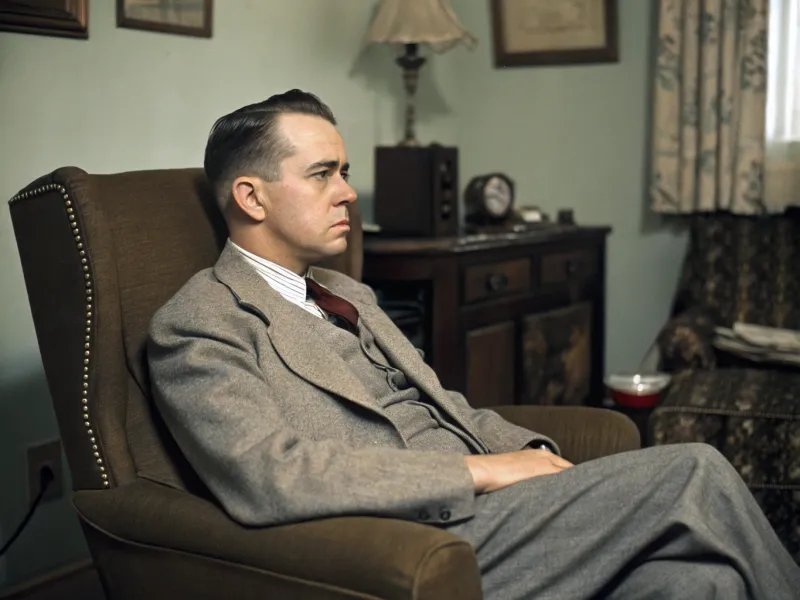
The 1950s cultural norm often discouraged open emotional expression, especially for men, who were expected to maintain a stoic demeanor. Emotional vulnerability was seen as a sign of weakness, leading to communication barriers and unmet emotional needs within marriages.
In contrast, modern marriages thrive on emotional openness and vulnerability. Today, expressing emotions is acknowledged as essential for building trust and intimacy. Couples are encouraged to communicate their feelings honestly, fostering a deeper connection and understanding.
By embracing emotional expression, partners can address issues openly and work towards solutions together. This shift has led to healthier relationships, where both individuals feel heard and valued. Encouraging emotional expression strengthens bonds, allowing couples to navigate challenges with empathy and support.
9. The Man’s Career Comes First

In the 1950s, it was commonly accepted that the husband’s career took precedence over the wife’s ambitions. The belief that a man’s professional success was the family’s top priority often sidelined women’s career aspirations and personal growth.
Today, marriages prioritize both partners’ careers equally. Modern relationships recognize the importance of supporting each other’s professional goals, leading to a more balanced and equitable partnership. Couples collaborate to achieve work-life balance, ensuring that both individuals can pursue fulfilling careers.
By valuing both partners’ ambitions, marriages have evolved to be more supportive and dynamic. This approach fosters an environment where both individuals can thrive, contributing to a healthier and more satisfying relationship. Mutual respect for each other’s career paths strengthens the bond and allows for shared success.
10. Husbands Don’t Do Housework
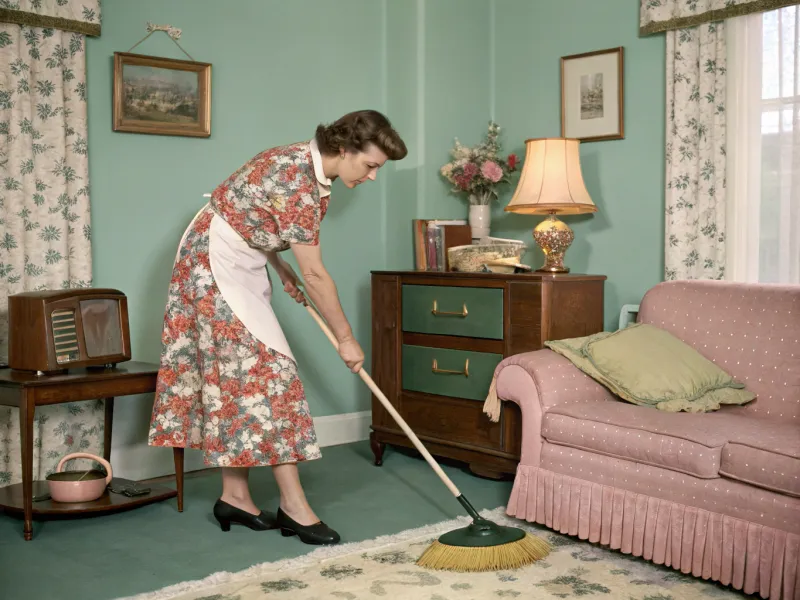
The belief that housework was solely the wife’s responsibility was prevalent in the 1950s. Men were often excused from domestic duties, reinforcing rigid gender roles and creating an imbalance in the division of labor at home.
Modern marriages have redefined these roles to promote equality and shared responsibilities. Today, both partners contribute to household chores, recognizing the importance of teamwork in maintaining a comfortable and functional home. This shift has led to more balanced and harmonious relationships.
By sharing domestic responsibilities, couples demonstrate mutual respect and collaboration. This approach not only alleviates stress but also allows both partners to focus on their careers, hobbies, and personal growth. Embracing shared housework fosters a more equitable and supportive partnership.
11. Appearance Is Everything
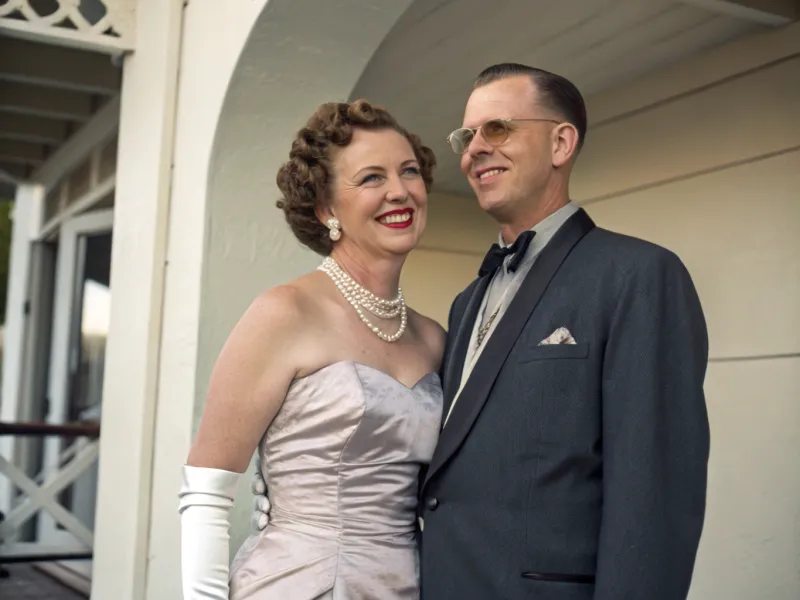
In the 1950s, maintaining appearances was a significant concern in marriage. Couples were expected to present a polished and perfect image to the world, often prioritizing societal expectations over genuine connection and happiness.
Today, authenticity and personal fulfillment take precedence over appearances. Modern couples focus on building relationships based on love, trust, and mutual respect, rather than conforming to superficial standards. This shift has allowed partners to express their true selves, fostering deeper connections and understanding.
By valuing authenticity over appearances, couples can create a more meaningful and fulfilling relationship. This focus on genuine connection encourages personal growth and emotional intimacy, allowing marriages to thrive beyond societal expectations.
12. Marriage Is for Procreation
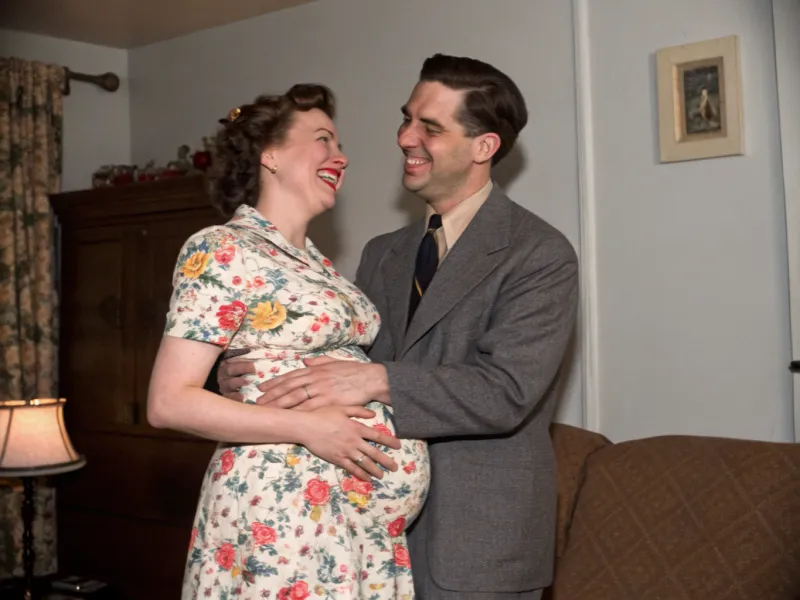
In the 1950s, the purpose of marriage was often linked to procreation and raising a family. Couples were expected to have children soon after marriage, with little regard for personal choice or readiness.
Modern marriages, however, recognize that procreation is not the sole purpose of a union. Couples today make family planning decisions based on personal desires, circumstances, and readiness. This shift has allowed partners to prioritize their relationship and individual goals before expanding their family.
By respecting each other’s choices and timing, couples foster a supportive environment where both partners can thrive. This approach ensures that when and if they choose to have children, it is a mutual decision that strengthens the family unit. Emphasizing personal choice over societal expectations creates a more fulfilling and balanced marriage.
13. Wives Handle Childcare
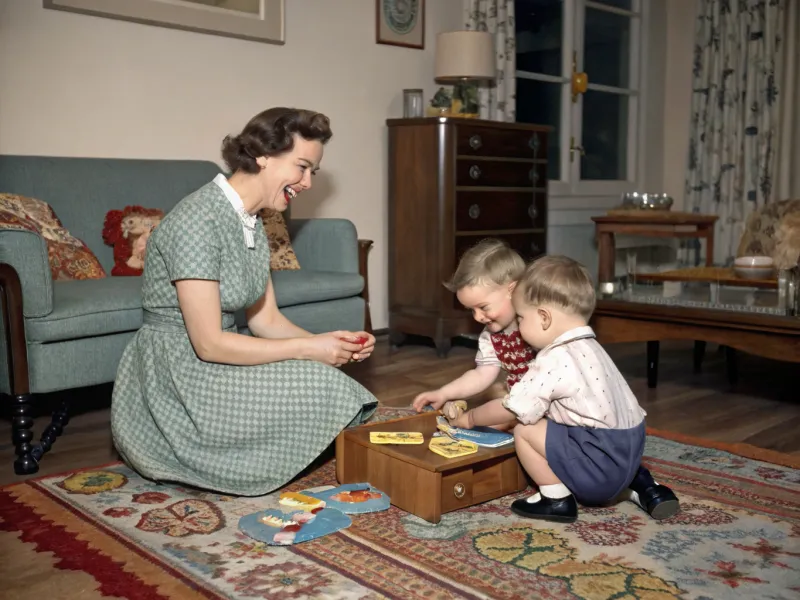
In the 1950s, the responsibility for childcare fell primarily on the wife, who was expected to be the primary caregiver while the husband focused on his career. This belief reinforced rigid gender roles and often led to an unequal distribution of parenting duties.
Today, modern marriages embrace shared parenting responsibilities. Both partners actively participate in raising their children, fostering a balanced and supportive family environment. This approach not only strengthens the parental bond but also allows both individuals to pursue their careers and personal interests.
By working together in childcare, couples promote equality and mutual respect. This collaboration ensures that both parents are involved in their children’s lives, contributing to a more dynamic and fulfilling family experience. Shared parenting responsibilities create a partnership where both partners feel supported and valued.
14. Marriage Should Be Perfect

The 1950s idealized the notion that marriage should be perfect, with couples expected to maintain an image of happiness and harmony at all times. This unrealistic expectation often led to suppressing problems and avoiding honest communication.
Modern marriages embrace imperfection and growth. Couples today understand that challenges and disagreements are natural and that working through them strengthens the relationship. Honesty and open communication are valued over maintaining a facade of perfection.
By acknowledging that no marriage is without flaws, partners can approach issues with empathy and understanding. This perspective encourages growth, resilience, and a deeper connection, allowing marriages to evolve and thrive over time. Embracing imperfection fosters a more authentic and fulfilling partnership.
15. Divorce Is Failure
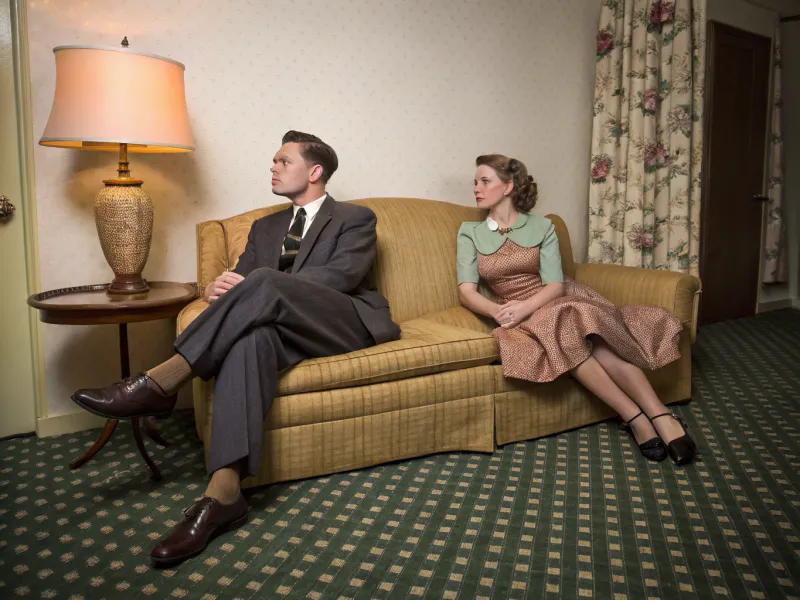
In the 1950s, divorce was heavily stigmatized and considered a failure, leading many couples to remain in unhappy or unfulfilling marriages. The societal pressure to stay married often overshadowed personal happiness and well-being.
Today, the perception of divorce has shifted. It is recognized as a viable option when a marriage is no longer healthy or beneficial to both partners. Modern relationships prioritize individual well-being, and divorce is seen as an opportunity for growth and a chance to pursue a more fulfilling life.
By viewing divorce as a step towards personal happiness rather than a failure, couples can approach separation with compassion and dignity. This perspective allows individuals to move forward positively, embracing new beginnings and opportunities. Acknowledging divorce as a valid choice reflects a broader understanding of what constitutes a successful and healthy relationship.
16. Women Take Care of In-Laws

During the 1950s, it was commonly expected that women would care for their in-laws, a duty often seen as an extension of their household responsibilities. This belief placed additional burdens on women, reinforcing traditional gender roles and limiting their personal growth.
Modern marriages encourage shared responsibilities when it comes to caring for extended family. Both partners are involved in making decisions about elder care, ensuring that the burden does not fall solely on one individual. This collaborative approach fosters a more balanced and equitable partnership.
By sharing caregiving duties, couples demonstrate mutual respect and support. This approach allows both partners to pursue their careers and personal interests while ensuring that family responsibilities are met. Embracing shared caregiving responsibilities strengthens the partnership and promotes a more harmonious family dynamic.
17. Marriage Equals Happiness

The 1950s perpetuated the belief that marriage was the ultimate key to happiness, with societal expectations often pressuring individuals to marry as a means of achieving personal fulfillment. This notion often led people to prioritize marriage over individual growth and self-discovery.
In contrast, modern relationships recognize that happiness is a personal journey. Marriage is seen as a partnership that enhances life, not the sole source of contentment. Couples today prioritize personal fulfillment and growth, understanding that a strong relationship is built on mutual support and shared happiness.
By valuing individuality within the partnership, marriages can thrive while allowing each person to pursue their passions and interests. This perspective fosters a more balanced and fulfilling relationship, where both partners contribute to each other’s happiness and well-being. Embracing personal growth within a marriage strengthens the bond and enriches the partnership.
18. Jealousy Shows Love

In the 1950s, jealousy was often misconceived as a sign of love and devotion. Couples believed that jealousy indicated deep affection, but this emotion frequently led to control and mistrust within relationships.
Today, healthy relationships are built on trust and open communication, not jealousy. Modern couples recognize that love is demonstrated through respect, understanding, and support, rather than possessiveness. They work towards building a foundation of trust, where both partners feel secure and valued.
By addressing insecurities and fostering honest communication, couples can eliminate jealousy and strengthen their bond. This approach encourages a supportive and loving environment, where both partners can grow and thrive. Embracing trust over jealousy fosters a more resilient and fulfilling partnership, creating a relationship where love is freely given and received.
19. Wives Manage All Social Events
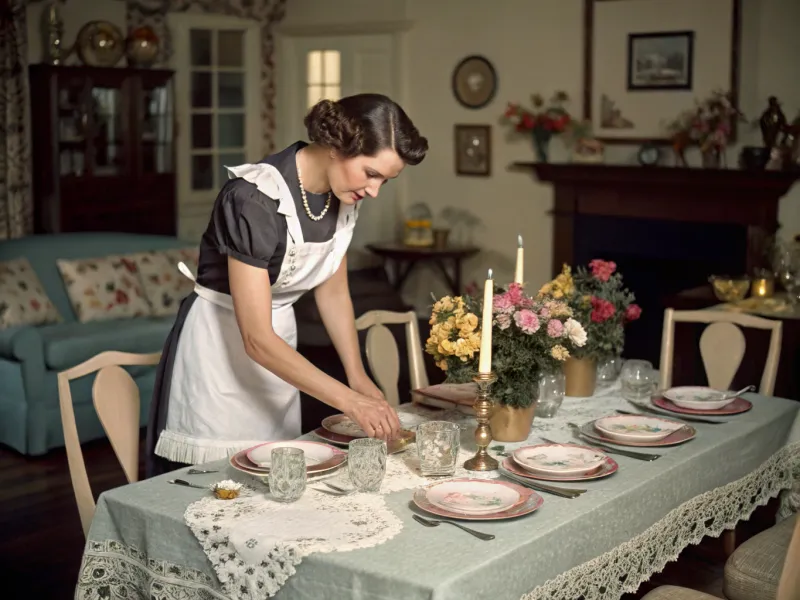
In the 1950s, wives were expected to manage all social events and gatherings, taking on the role of hostess and planner. This responsibility often fell solely on women, reinforcing traditional gender roles and limiting their social and personal freedom.
Modern marriages embrace shared responsibilities for social planning. Both partners collaborate to organize events, share hosting duties, and participate equally in social interactions. This approach fosters a more balanced and supportive partnership, allowing both individuals to enjoy social engagements.
By sharing the responsibility of social planning, couples demonstrate mutual respect and teamwork. This collaboration not only reduces stress but also allows both partners to focus on building and maintaining meaningful connections. Embracing shared social responsibilities strengthens the partnership and promotes a more harmonious and enjoyable social life.
20. Men Don’t Show Affection

In the 1950s, societal norms often dictated that men should refrain from openly showing affection, viewing it as a sign of weakness. This belief created emotional barriers within marriages, limiting intimacy and connection between partners.
Today, healthy relationships value affection as a vital component of emotional intimacy. Modern couples understand that showing love and affection is essential for building a strong connection and fostering a supportive environment. Men are encouraged to express their feelings openly, creating a more balanced and nurturing partnership.
By embracing affection, partners can cultivate deeper bonds and enhance their emotional connection. This shift has led to more fulfilling relationships, where both individuals feel loved and appreciated. Encouraging open expressions of affection strengthens the bond and allows couples to navigate challenges with empathy and support.
21. Secret Finances Are Acceptable

In the 1950s, it was not uncommon for spouses to maintain separate, secret finances. This practice often led to mistrust and financial disparity within marriages, as partners were not fully transparent about their financial situations.
Modern marriages thrive on financial transparency and collaboration. Couples today understand the importance of open communication regarding finances, working together to create shared goals and responsibilities. This approach fosters trust and promotes a more equitable partnership.
By embracing financial transparency, partners can work towards common financial goals and make informed decisions together. This collaboration not only strengthens the relationship but also ensures that both partners are equally invested in their future. Emphasizing financial honesty fosters a more supportive and trusting marriage, allowing couples to navigate financial challenges with confidence.
22. Marital Problems Are Private

The 1950s belief that marital problems should be kept private often led couples to avoid seeking help or discussing issues openly. This reluctance to address problems hindered communication and prevented couples from finding solutions together.
Today, healthy relationships prioritize open communication and seek support when needed. Modern couples understand that discussing challenges and seeking external help, such as counseling, can strengthen the relationship and promote personal growth.
By breaking the silence around marital issues, partners can address problems collaboratively and work towards solutions. This openness encourages a supportive environment, where both individuals feel heard and valued. Embracing transparency in addressing marital challenges fosters a more resilient and fulfilling partnership.
23. Husband’s Word Is Law

In the 1950s, the belief that the husband’s word was final was prevalent in many marriages. This dynamic often led to an imbalance of power, with women having little say in important decisions and feeling undervalued within the relationship.
Modern marriages prioritize equality and mutual respect. Today, couples work together to make decisions, ensuring that both partners’ voices are heard and valued. This collaborative approach fosters a more balanced and supportive partnership, where both individuals feel empowered and respected.
By embracing equality in decision-making, partners can build a stronger connection and navigate challenges together. This shift towards mutual respect and shared responsibility enhances the relationship’s strength and resilience, moving away from the outdated notion of one partner having ultimate authority.
24. Children First, Marriage Second

In the 1950s, the belief that children should be the primary focus of the family often overshadowed the marital relationship. Parents prioritized their children’s needs over their own, sometimes neglecting the couple’s connection and personal growth.
Modern marriages emphasize the importance of nurturing the marital relationship alongside parenting. Couples today understand that a strong partnership provides a stable foundation for the family, benefiting both partners and their children. By prioritizing their relationship, parents can model healthy relationship dynamics for their children.
By balancing the needs of the marriage with parenting responsibilities, couples ensure that both partners feel supported and valued. This approach fosters a nurturing environment for children, where love and respect are demonstrated through the parents’ strong and healthy relationship. Emphasizing the marital bond alongside parenting strengthens the family unit and promotes a more harmonious and fulfilling family life.
25. Wives Shouldn’t Be Educated
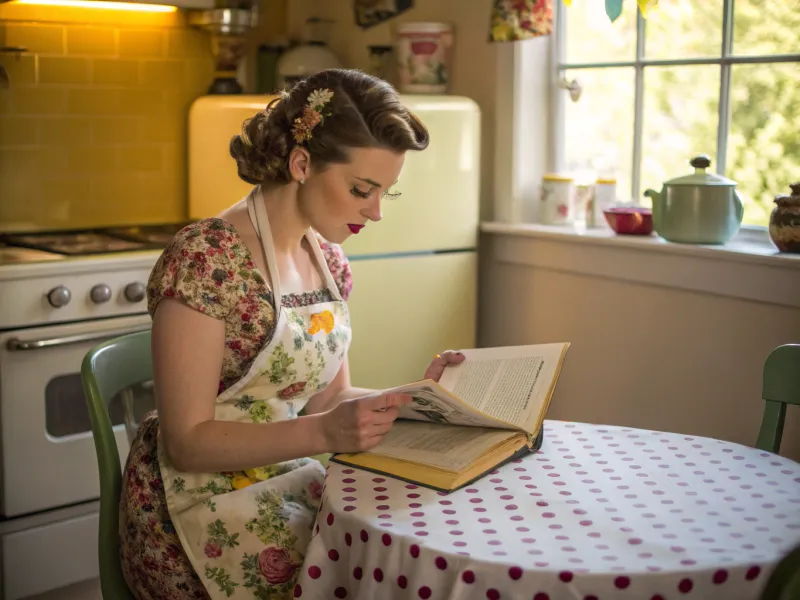
In the 1950s, the belief that women did not need education beyond basic schooling was widespread. Higher education for women was often seen as unnecessary, reinforcing traditional gender roles and limiting women’s opportunities for personal and professional growth.
Today, modern marriages value education and personal development for both partners. Couples recognize that empowering women through education enhances the partnership, allowing both individuals to pursue their careers and passions. This shift promotes a more equitable and dynamic relationship, where both partners can thrive.
By valuing education for both partners, marriages foster an environment of mutual respect and support. This approach encourages lifelong learning and growth, allowing couples to navigate challenges with knowledge and confidence. Emphasizing education and personal development strengthens the relationship and enriches the partnership, creating a more fulfilling and balanced marriage.
26. Husbands Don’t Show Vulnerability

In the 1950s, societal norms often dictated that men should conceal vulnerability, viewing it as a sign of weakness. This belief created emotional barriers within marriages, limiting intimacy and understanding between partners.
Modern relationships embrace vulnerability as a strength. Today, couples recognize that sharing feelings and insecurities fosters a deeper connection and builds trust. Men are encouraged to express their emotions openly, creating a more balanced and supportive partnership.
By embracing vulnerability, partners can cultivate a more authentic and fulfilling relationship. This shift has led to healthier marriages, where both individuals feel heard and valued. Encouraging open expressions of vulnerability strengthens the bond and allows couples to navigate challenges with empathy and support, fostering a resilient and loving partnership.
27. Separate Interests Are Unhealthy

In the 1950s, the belief that couples should share all interests and activities was widespread, often leading to a lack of individuality and personal growth within the marriage. This notion discouraged partners from pursuing separate hobbies and interests, limiting personal fulfillment.
Today, modern marriages recognize the importance of individuality within the partnership. Couples understand that pursuing separate interests and activities fosters personal growth and enriches the relationship. This approach encourages each partner to maintain their identity, contributing to a more dynamic and fulfilling partnership.
By valuing individuality and personal interests, couples create a more balanced and supportive relationship. This perspective allows both partners to thrive, fostering a deeper connection and mutual respect. Embracing separate interests enhances the partnership, allowing each individual to bring new experiences and insights into the relationship.
